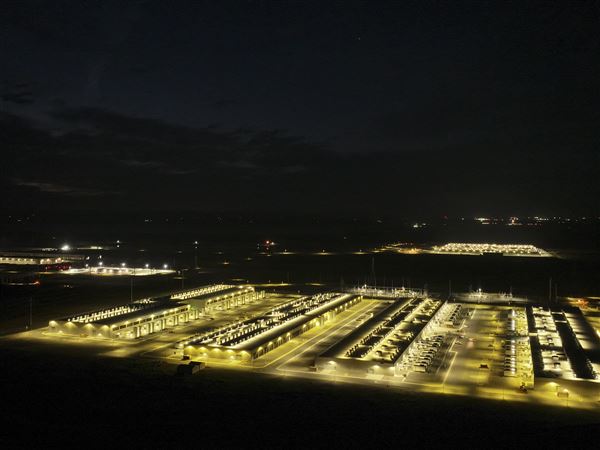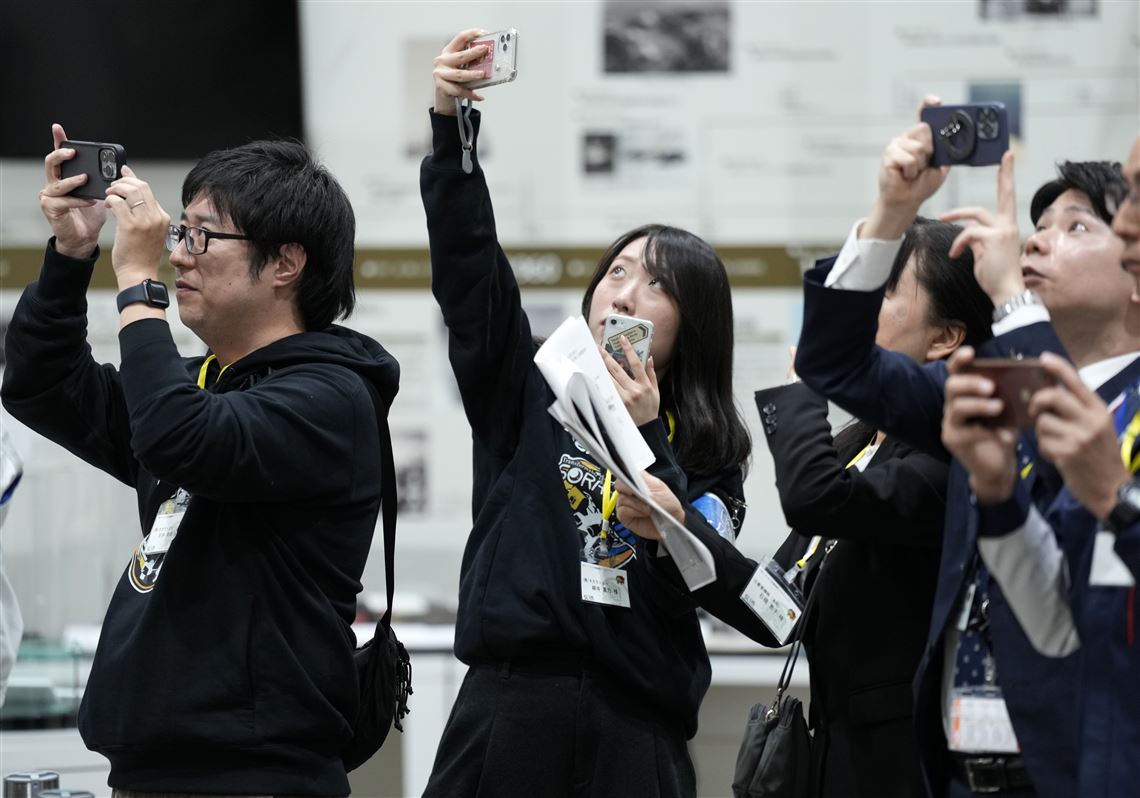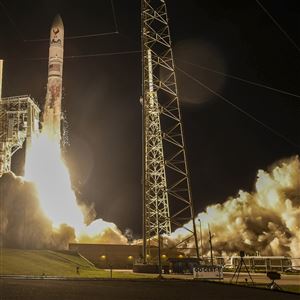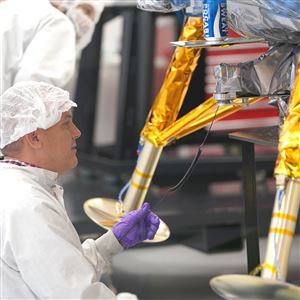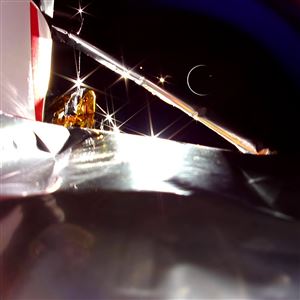TOKYO — Japan became the fifth country in history to reach the moon when one of its spacecrafts without astronauts successfully made a soft landing on the lunar surface early Saturday.
However, space officials said they need more time to analyze whether the Smart Lander for Investigating Moon, or SLIM, achieved its mission priority of making a pinpoint landing. They also said the craft's solar panel had failed to generate power, which could shorten its activity on the moon.
Space officials believe the SLIM’s small rovers were launched as planned and that data was being transmitted back to Earth, said Hitoshi Kuninaka, head of the Institute of Space and Astronautical Science, a unit of Japan's space agency.
But he said that SLIM’s solar battery wasn’t generating power and that it had only a few more hours of battery life. He said that the priority now was for the craft to gather as much data about its landing and the moon as possible on the remaining battery.
Japan follows the United States, the Soviet Union, China and India in reaching the moon.
Mr. Kuninaka said he believes that Japan’s space program at least achieved “minimum” success.
SLIM landed on the moon at about 12:20 a.m. Tokyo time on Saturday.
There was a tense wait for news after the Japan Aerospace Exploration Agency’s mission control initially said that SLIM was on the lunar surface, but that it was still “checking its status.” No further details were given until a news conference nearly two hours later.
For the mission to be considered fully successful, space officials need to confirm whether SLIM made a pinpoint landing. Mr. Kuninaka said that while more time is needed, he personally thinks it was most likely achieved, based on his observation of data showing the spacecraft's movement until the landing and its ability to transmit signals after landing.
SLIM, which was aiming to hit a very small target, is a lightweight spacecraft about the size of a passenger vehicle. It was using “pinpoint landing” technology that promises far greater control than any previous moon landing.
While most previous probes have used landing zones about 6 miles wide, SLIM was aiming at a target of just 330 feet.
A landing of such precision would be a world’s first, and would be crucial technology for a sustainable, long-term and accurate space probe system, said Hiroshi Yamakawa, president of Japan Aerospace Exploration Agency, or JAXA.
Japan needs the technology to secure its place and contribute in international space projects, Mr. Yamakawa said.
The project was the fruit of two decades of work on precision technology by JAXA.
SLIM, nicknamed “the Moon Sniper,” started its descent at midnight Saturday, and within 15 minutes it was down to about 6 miles above the lunar surface, according to the space agency, which is known as JAXA.
At an altitude of 3 miles, the lander was in a vertical descent mode, then at 165 feet above the surface, SLIM was supposed to make a parallel movement to find a safe landing spot, JAXA said.
The spacecraft was testing technology to allow moon missions to land “where we want to, rather than where it is easy to land,” JAXA has said. The spacecraft also was supposed to seek clues about the origin of the moon, including analyzing minerals with a special camera.
The SLIM, equipped with a pad each on its five legs to cushion impact, was aiming to land near the Shioli crater, near a region covered in volcanic rock.
The closely watched mission came only 10 days after a moon mission by a U.S. private company failed when the spacecraft developed a fuel leak hours after the launch.
SLIM was launched on a Mitsubishi Heavy H2A rocket in September. It initially orbited Earth and entered lunar orbit on Dec. 25.
Japan hopes to regain confidence for its space technology after a number of failures. A spacecraft designed by a Japanese company crashed during a lunar landing attempt in April, and a new flagship rocket failed its debut launch in March.
JAXA has a track record with difficult landings. Its Hayabusa2 spacecraft, launched in 2014, touched down twice on the 3,000-foot-long asteroid Ryugu, collecting samples that were returned to Earth.
A successful pinpoint landing by SLIM, especially on the moon, would raise Japan’s profile in the global space technology race.
Takeshi Tsuchiya, aeronautics professor at the Graduate School of Engineering at the University of Tokyo, said it was important to confirm the accuracy of landing on a targeted area.
“It is necessary to show the world that Japan has the appropriate technology in order to be able to properly assert Japan’s position in lunar development,” he said. The moon is important from the perspective of explorations of resources, and it can also be used as a base to go to other planets, like Mars, he said.
SLIM was carrying two small autonomous probes — lunar excursion vehicles LEV-1 and LEV-2, which officials say were believed to have been released just before landing.
LEV-1, equipped with an antenna and a camera, is tasked with recording SLIM’s landing. LEV-2, is a ball-shaped rover equipped with two cameras, developed by JAXA together with Sony, toymaker Tomy and Doshisha University.
First Published: January 19, 2024, 5:50 p.m.
Updated: January 19, 2024, 9:40 p.m.
